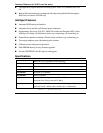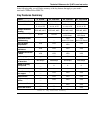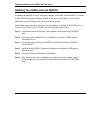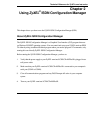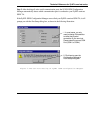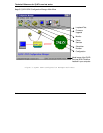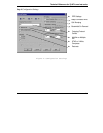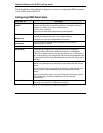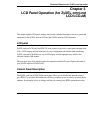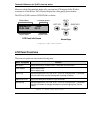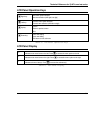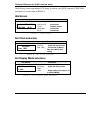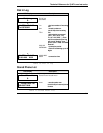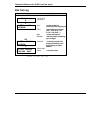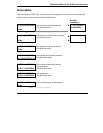
Technical Reference for ZyXEL omni.net series
2-6
Follow the guidelines in the table below designed to assist you in configuring the ISDN parameters
of your ZyXEL omni.net ISDN TA.
Configuring ISDN Parameters
ISDN Parameter Description
Outgoing Protocol
Control
Sets the calling protocol for the your ZyXEL omni.net ISDN TA
.
The
protocol selected should match the protocol in use by the device or
network your ISDN TA is calling. Selections are
[X.75/V.110/V.120/PPP].
Note: PPP is the most widely used protocol for Internet Access.
Multilink
Multiple Link
$
Check the selection box if you want to combine 2 x B-channels to
increase the data transfer rate. This is called multilink.
%
Multiple Link with two independent B-Channels.
STAC or V.42bis
Compression
You can enable or disable data compression by checking or
unchecking the check box.
Data Rate
Click the 56Kbps or 64Kbps option button.
Call Bumping
Call Bumping configures your ISDN device to allow outgoing or
incoming analog calls while a Multilink connection is established.
If this box is checked when a handset is picked up on a POTS port, or
an incoming analog call is detected, the B-channel associated with this
call will disconnect from the ISDN data call and allow the analog call to
proceed.
Keep Connection Alive
Keep Connection Alive sets a timer that will send a dummy PPP
packet every 59 seconds to maintain the connection with the remote
device.
This is useful during long periods when there is no data transfer, but
you do not wish to be automatically disconnected by the remote
device.
Note: Do not set this option if you are charged by time usage, as this
can maintain the connection indefinitely until it is manually
disconnected.
Bandwidth-On- Demand
Bandwidth-On-Demand settings are used to control the adding and
removing of the 2nd link of a Multilink connection.
Table 3. Configuring ISDN Parameters



